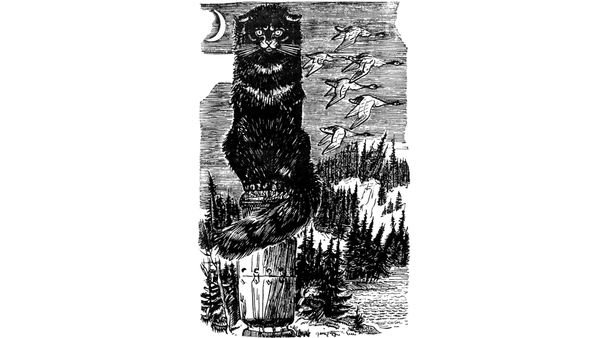The best example of what it means to concretize something (a term I learned from Marion Woodman) I saw in the original Wizard of Oz.
The Scarecrow's desire for a brain (intelligence; knowledge; the ability to help others) gets turned into a diploma. The Tin Man gets a ticking clock instead of a heart (and is told, to boot, that his heart is judged not by how much he loves, but by how much he is loved by others). The Cowardly Lion gets a medal to represent his courage.
When does a representation become a replacement? It's not easy to tell. Sometimes objects can help connect us to the essence of our desires. At a certain point, it seems like they can become stand-ins for the living essence of the thing.
I guess I'm pretty easy to turn into a cartoon (instead of a living breathing woman), but tidying has an important place in my life and I won't apologize for it.
I originally tidied because I wanted to be responsible for anything that I’d brought into the dynamic of my relationships, and I began the process as soon as I was able to notice myself feeling irritated or pointing fingers at others more often than I would like. The course of my life changed when I looked at my unexamined past – the story told in objects – through the lens of physical-emotional intuition.
I kept tidying and learned things along the way. Categories of objects can be codes for very large needs or desires. They can also operate on a cultural level. There's a book called The Culture Code, by Clotaire Rapaille, that describes some of the ways different things (alcohol, shopping, et cetera) have symbolic or emotional differences between cultures. It's an interesting book, and I found a few culture codes of my own.
Yogurt, for example. Most American grocery stores have miles of it. I looked at commercials for yogurt (usually ladies in white robes eating it and talking about how good it felt) and decided that the American culture code for yogurt is "sex without guilt or shame."
Milk-based products in general can be code for mother, regardless of the culture.
In my personal tidying, two categories stood out.
Teapots and teacups were feminine friendship and conversation. But I was missing those things in my life, so the teapots weren't really serving their purpose. I was just holding on to them.
And fabric – my main creative outlet during my marriage – I had so much of it. I gradually let it go until only a small selection was left. I cried when I thought about giving up the hobby completely – it had been so fulfilling. There was only so much sewing I could do in a lifetime. As I held the last few pieces of fabric and reflected on what was going on in my relationships when I began this hobby, and what the agreements had been in my relationship that went awry, I realized that the fabric symbolized my creative potential. Not just the potential to have children – a desire I still feel – but what to do with the feminine creative energy of my being. It could only go so many ways when I was married to Jordan.
If I let go of that fabric, I was accepting that my life was finite (I wouldn't be able to do everything), and I was opening myself up to relationship again, and to these important questions.
Sewing helped connect me to my feminine self in a way that had been blocked when I worked in games. I wore black body armor because I rode a motorcycle, I cut my hair short, I had to maintain a certain kind of persona in order to function in that world. When I was able to relax a bit and feel supported, my feminine side came out, and it gave me a chance to connect with my body and sensory creativity in new ways.
That connection to the feminine self shows up for me in Return to Oz via Dorothy's connection to Ozma.
Oz is busted because it's been concretized – the Nome King thinks he owns everything and he's turned everything into objects that he hoards (or into literal sand and earth, a more abstract representation of matter). He's locked Princess Ozma (the rightful ruler) away in a mirror, and in her place, Princess Mombi takes the heads off all the prettiest girls and keeps them in glass cabinets. The rest of their body is left as stone. (This, to me, is Instagram.)
This motif also exists in The Lion, the Witch, and the Wardrobe, and this is what concretizing is – taking something alive and dynamic and turning it into... a thing. Stone.
My body and my identity went from being a stone thing to a living thing. This website is freaking dangerous because I could turn myself to stone if I don't take risks and just let things out, or if I take anything too seriously.
I'm always looking for Ozma – that reflection of the living self that exists alongside the material world but who is not, herself, material.



Member discussion